轻型路轨两用高空作业车总体布置与设计(英文版)(含CAD图,CATIA三维图)(任务书,开题报告,外文翻译,文献摘要,论文说明书英文版8000字,CAD图5张,CATIA三维图)
Abstract
With the development of urban rail transit in China, railway and urban rail transit have developed rapidly. More than 30 cities have opened urban rail transit. An increase in the number of infrastructures also means an increase in the frequency of equipment failures, which requires efficient maintenance of equipment. Equipment to ensure that the failure of equipment can be timely maintenance or replacement. The dual-use high-altitude work vehicle has the advantages of flexibility and adaptability, and can transfer personnel and equipment to specific locations for air operations by using rail transit and highway traffic, which is more advantageous than the traditional high-altitude work vehicle and high-altitude work vehicle. However, the domestic research on road-to-rail dual-use aerial work vehicle is not very mature, so we need to increase the research investment in this aspect. This design mainly provides an overall layout plan of a road-and-rail dual-purpose high-altitude work vehicle. The special work vehicle of this plan can not only complete the basic functions of ordinary cars, but also realize the functions of upper rail, lower rail, rail running and high-altitude work. This paper describes the selection and change of the chassis of this kind of vehicle, the layout of the force extractor, the overall structure design and hydraulic circuit design of the aerial work device, the overall structure design and hydraulic circuit design of the rail driving system (mainly bogie), and so on.
Keywords:roadway/rail dual-purpose aerial work vehicle; General layout; Articular-arm high-altitude working platform;Single-shaft power bogie.
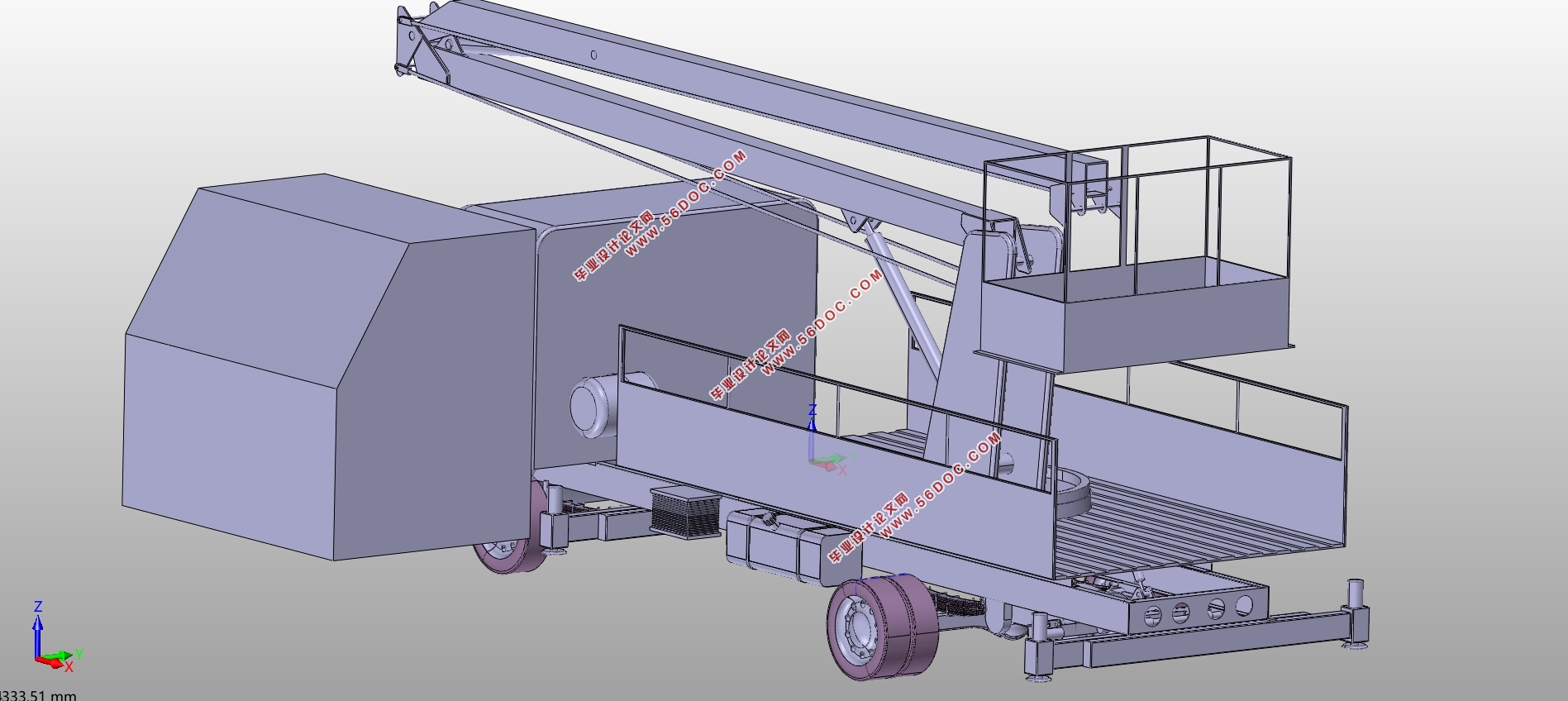


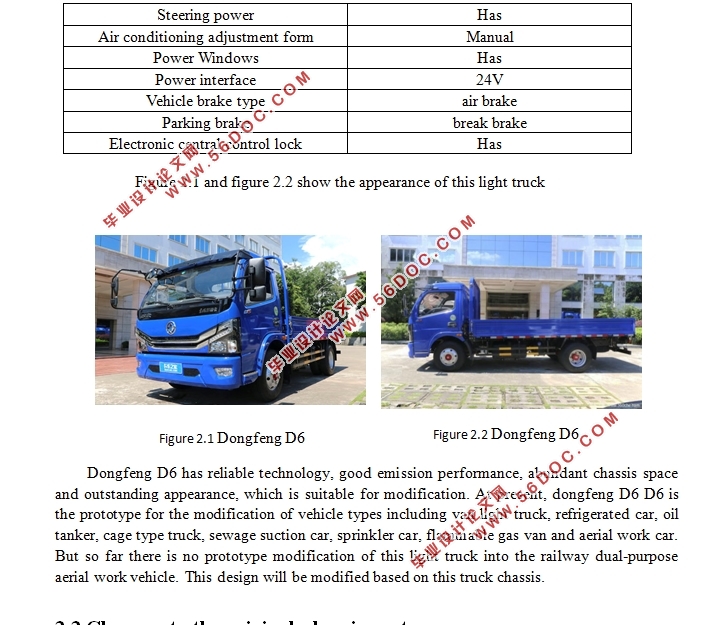
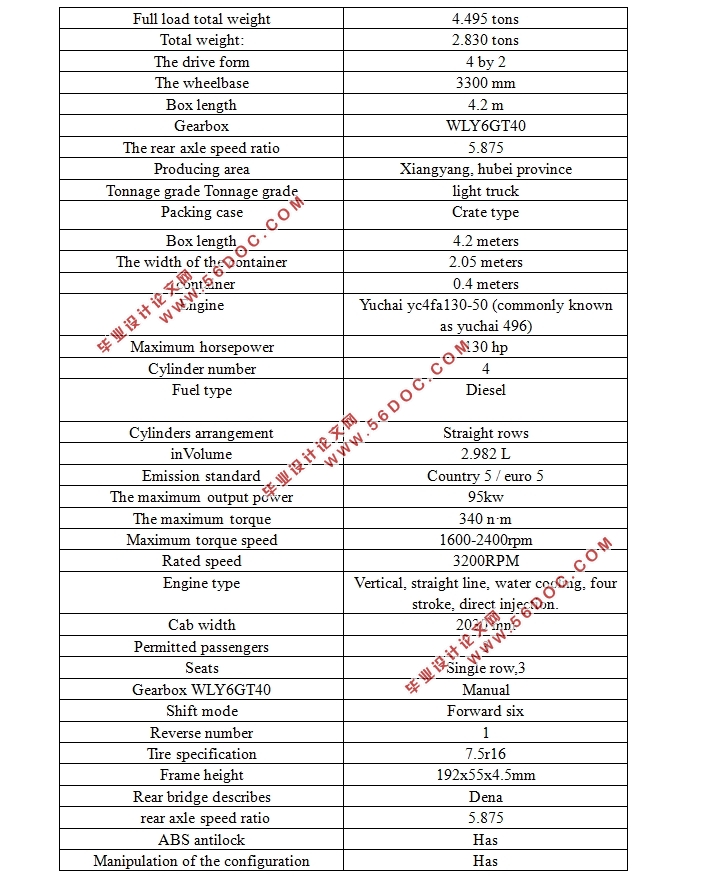
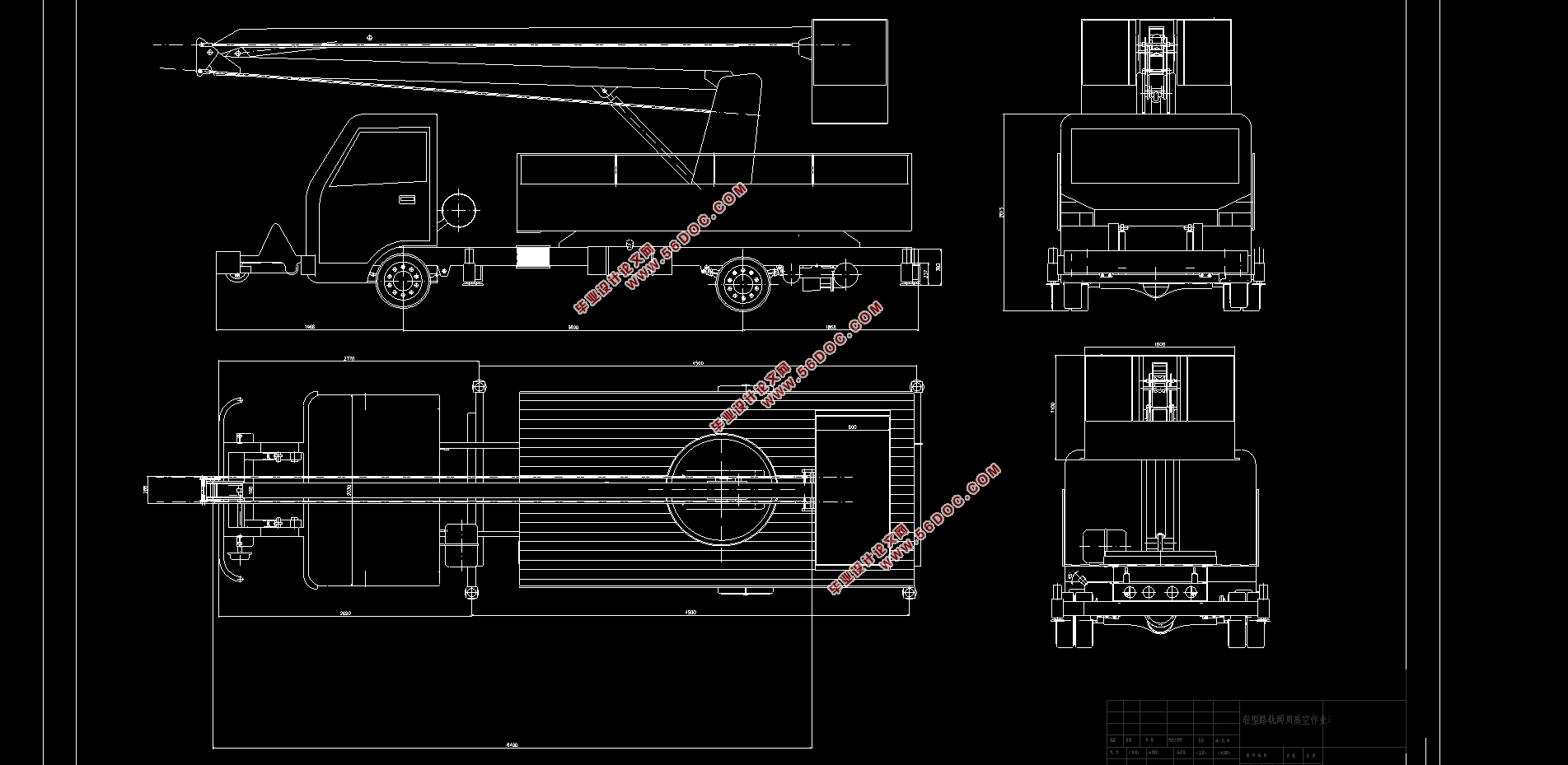
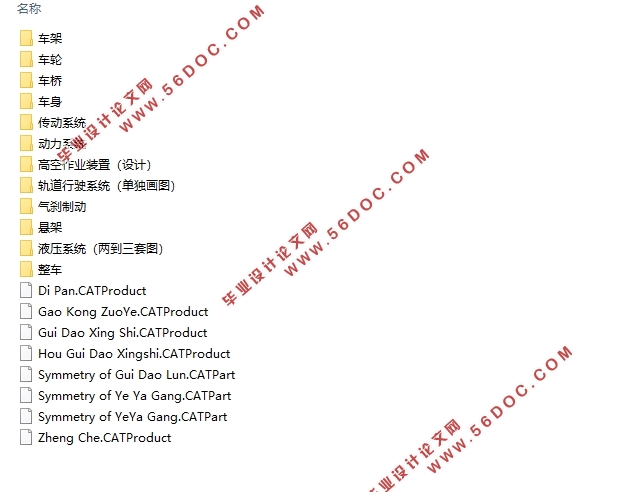
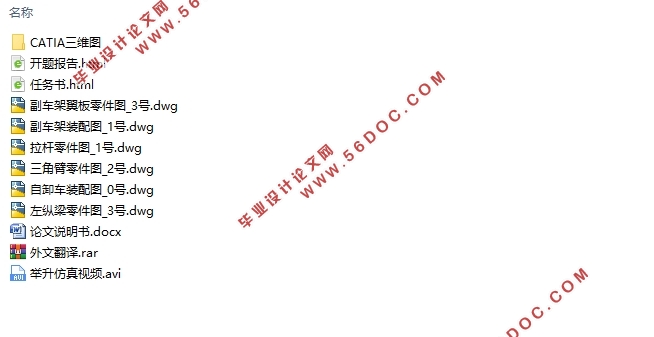
Directory
Chapter 1 introduction 1
Chapter 2 chassis overall layout design 3
2.1 chassis selection 3
2.2 changes to the original chassis parts: 5
2.3 layout of force Power-Take-Off 6
2.4 sub-frame design 6
Chapter 3 design of aerial working equipment 8
3.1 review 8
3.2 design of lifting mechanism 8
3.2.1 material selection 8
3.2.2 analysis of working bucket force 9
3.2.3 determination of upper arm size 10
3.2.5 determination of lower arm size 12
3.2.6 lower arm strength check 13
3.3 rotary mechanism design 13
3.4 leg mechanism design 15
3.4.1 determination of leg transverse span 16
3.4.2 determination of leg longitudinal span 17
3.4.3 calculation of leg pressure 17
3.4.4 supporting foot design 19
Chapter 4 the design of Rail running system 20
4.1 determination of rail traction mode 20
4.2 overall design of bogie 21
4.2.1 wheel design 21
4.2.2 architecture design 22
4.2.3 design of drive device 22
4.3 calculation of rail running resistance 22
W is the load of rail wheel, take W=45000N; 23
Chapter 5 hydraulic system design 24
Chapter6 Conclusion 27
Acknowledgement 28
Reference 29
|

















